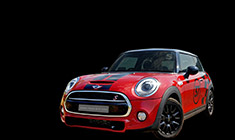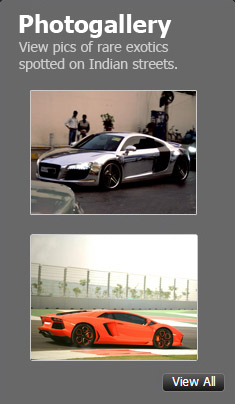News
Warranty replacement vs paid replacement: Difference in parts quality
I finally wanted to get rid of the rattle and requested the SA to order a new steering column
BHPian abaliga recently shared this with other enthusiasts.
Background:
I have been getting our 14 year old i10 serviced at an FNG which is run by someone who used to work at a Hyundai dealership, he now runs a multi brand service center with some of his former colleagues from the dealership and is able to procure OEM parts for most manufacturers for repairs, he is very transparent in terms of the parts he uses for servicing and does not use non OEM parts unless it is very hard to procure OEM ones.
Issue:
Our i10 has a steering rack/column rattle since the 1st month of ownership (known issue for 1st gen i10/i20) , service advisor knows me from the warranty days of the car, the same one who now runs the FNG, I had reported the rattle multiple times during the course of ownership starting from the first year when the vehicle was under warranty and every time it was fixed by the dealership it reappeared within a week or two, when I pointed out the recurrence he told me that they are not allowed to order replacement parts for certain category of known issues and as per the company service bulletin they are supposed to suppress the rattle by using some insulation pads which turned out to be a temporary work around, we somehow endured this problem throughout the 14.5 year ownership of our i10.
Finding:
I finally wanted to get rid of the rattle and requested the SA to order a new column (costs about 30k), he wanted me to share the VIN to get the replacement part and when I started a candid discussion to understand what parts are being considered for replacement and the respective prices, he revealed that Hyundai has a separate parts catalogue for under warranty vs out of warranty replacements where the part quality is significantly better on the paid ones
This was a shocking revelation to me and is something that I find down right unethical, has anyone else on the forum come across this practice of varying part quality for warranty vs paid repairs by other OEMs?
Here's what GTO had to say on the matter:
All the parts we bought & replaced in our erstwhile C220 CDI lasted more than the factory part or the warranty replacement part. Many times, what we bought from outside lasted twice the km. It was quite telling as to the kind of cost-cutting OEMs do.
Here's what BHPian Ghost131100 had to say on the matter:
This would actually answer a question of mine. A few years back, my i10 had a clutch problem. The car would stall or jerk at 1st gear and then run relatively smoothly from 2nd gear onwards. The clutch was supposed to have been changed but the issue never really went away.
A few months ago, the car, now being out of warranty started having the same issue again but this time with a vengeance. We changed the clutch and viola, the issue was gone and hasn’t come back since. So the theory where out of warranty parts are better than warranty parts does make sense.
Here's what BHPian Turbanator had to say on the matter:
Most of the manufacturers (OEM/ Tier-1 suppliers) will have only one type of Quality, but there can be multiple variants depending on the specification. There are no "A" or "B" qualities usually.
There can be two scenarios that I can think of, a different spec or brand used at the time of build of the car or warranty and a better spec. or another brand for parts. Usually, spare parts bring good margins to the companies, so they will not like to lose that sales. Whereas in car, it's the brand and model that sells. No one chooses a car based on what's fitted inside and usually, manufacturer's warranty is 2-3 Years.
So, as an example, an Exide battery that Maruti gives is for Rs 3868; only part number is mentioned, with no specifications that I can see, just - built to exclusive OE specifications. Maruti should have a 12-month warranty on such parts. But, If I use Exide Battery Finder, it shows a different part, costs Rs 4146 and mentions a 48-month warranty. So, in this case, it can be due to a higher capacity battery that Exide is giving in aftermarket as against something different to Maruti. Or, even the brand can be other as I mentioned before.
Similarly, for Clutch plates for K10; Maruti may be using a different brand in the car at the time of production and, for replacement, another brand. As we can see, some cheaper options from LUK at Bodomo, so unlike a battery, Maruti is asking for higher rates than the market. It can be due to a different brand or it's also possible Maruti charges a premium on some spare, which are usually replaced in the workshops mostly, even if aftermarket premium brands (LUK is one of the better brands) are cheap.
Here's what BHPian greenhorn had to say on the matter:
I recall reading from gannu and leoshashi's threads that there will be multiple equivalent suppliers for the same part, and even though in theory they both meet manufacturing quality standards, in practice and price there is a big difference. For maruti you have SGP and mgp parts, for VW you have the 6RF parts that are made in India vs the global equivalents that most team bhpians seem to prefer. Stellantis recently launched a "value" line of their own parts compared to mopar My own experience, tata had a recon parts catalog for major mechanical components which used the same numbers but were rebuilt and were offered to end consumers for a while as a cheaper option and were the only option for insurance/extended warranty repairs because it was written into the policy wordings.
Plenty of tier 1 vendors doing it, or at least more or less what the op is worried about
Here's what BHPian androdev had to say on the matter:
I find it hard to believe such a practice exists. Let's first understand some terminology.
Genuine parts: Automaker branded - what goes into your car at the factory, passed QC of the automaker. Expensive to due to automaker margin.
OE parts: Same as above, without the automaker brand. Sold with vendor branding directly. These are excess quantity produced above what's need to supply the automaker - importantly passed QC of the automaker. Except for the packaging+logo, there is no difference between genuine and OE parts. Limited availability.
OEM parts: Parts made by the same vendor who supplied parts to the automaker or has license to manufacture these parts (has access to the complete technical spec of the part) - who may or may not be the current supplier. Likely to meet the specifications but no obligation of passing QC of the automaker. Quality depends on the reputation of the brand.
Aftermarket parts: 3rd party suppliers with no connection to the automaker.
These suppliers can have multiple factories in different countries and the parts may come from any factory.
Dealers are only allowed to use genuine parts. Period. The only "tweaking" they can do is that use locally sourced parts for warranty jobs and imported parts for paid jobs to have higher profit margins. The difference in quality maybe a coincidence - the primary motivation could be to keep the profit margins high (local vs imported, repair vs replace, child-part vs entire part).
In the case of Hyundai, it's unlikely that factory assembly line uses a more expensive part compared to a warranty repair job. They are both likely to be locally supplied parts - cheaper. When it comes to the paid jobs, the dealer might use more expensive imported parts or parts from a different high-cost supplier - never based on quality - but more to do with profit margins and supply chain constraints. At the end of the day, the dealer has to use only genuine parts.
Check out BHPian comments for more insights and information.











.jpg)











